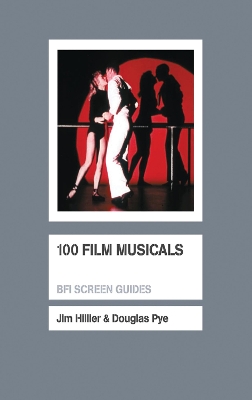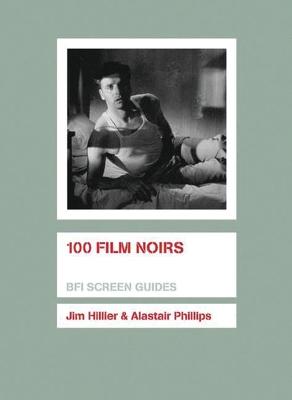Screen Guides
2 total works
From the coming of sound to the 1960s, the musical was central to Hollywood production. Exhibiting - often in spectacular fashion - the remarkable resources of the Hollywood studios, musicals came to epitomise the very idea of 'light entertainment'. Films like Top Hat and 42nd Street, Meet Me in St. Louis and On the Town, Singin' in the Rain and Oklahoma!, West Side Story and The Sound of Music were hugely popular, yet were commonly regarded by cultural commentators as trivial and escapist. It was the 1970s before serious study of the Hollywood musical began to change critical attitudes and foster an interest in musical films produced in other cultures. Hollywood musicals have become less common, but the genre persists and both academic interest in and fond nostalgia for the musical shows no signs of abating.
100 Film Musicals provides a stimulating overview of the genre's development, its major themes and the critical debates it has provoked. While centred on the dominant Hollywood tradition, 100 Film Musicals includes films from countries that often tried to emulate the Hollywood style, like Britain and Germany, as well as from very different cultures like India, Egypt and Japan. Jim Hillier and Douglas Pye also discuss post-1960s films from many different sources which adapt and reflect on the conventions of the genre, including recent examples such as Moulin Rouge! and High School Musical, demonstrating that the genre is still very much alive.
100 Film Musicals provides a stimulating overview of the genre's development, its major themes and the critical debates it has provoked. While centred on the dominant Hollywood tradition, 100 Film Musicals includes films from countries that often tried to emulate the Hollywood style, like Britain and Germany, as well as from very different cultures like India, Egypt and Japan. Jim Hillier and Douglas Pye also discuss post-1960s films from many different sources which adapt and reflect on the conventions of the genre, including recent examples such as Moulin Rouge! and High School Musical, demonstrating that the genre is still very much alive.
Film noir's popularity with cinema audiences, enthusiasts and scholars has remained unabated since post-war French critics began discerning a new trend in American film with the release of such stylish and atmospheric crime features as Double Indemnity and Murder, My Sweet. Many of Hollywood's greatest directors such as Fritz Lang and Robert Siodmak are now closely associated with film noir's psychologically acute observations of the darker contours of the American urban landscape. Thanks to evocative cinematography, sharp writing and powerful performances, these films have had an enduring influence on international visual culture.
100 Film Noirs provides an authoritative overview of film noir past and present by examining its core films and themes and providing an accessible introduction to critical debates. The book goes beyond the classical canon to examine the ways in which noir continues to have a diverse influence on American cinema. It demonstrates the way that noir has intervened in other more established Hollywood genres and also considers numerous lesser-known examples of the field. Importantly, 100 Film Noirs has a strong international dimension and provides new and revealing insights into film noirs from France, Germany, Japan, India, Mexico and beyond.
100 Film Noirs provides an authoritative overview of film noir past and present by examining its core films and themes and providing an accessible introduction to critical debates. The book goes beyond the classical canon to examine the ways in which noir continues to have a diverse influence on American cinema. It demonstrates the way that noir has intervened in other more established Hollywood genres and also considers numerous lesser-known examples of the field. Importantly, 100 Film Noirs has a strong international dimension and provides new and revealing insights into film noirs from France, Germany, Japan, India, Mexico and beyond.

